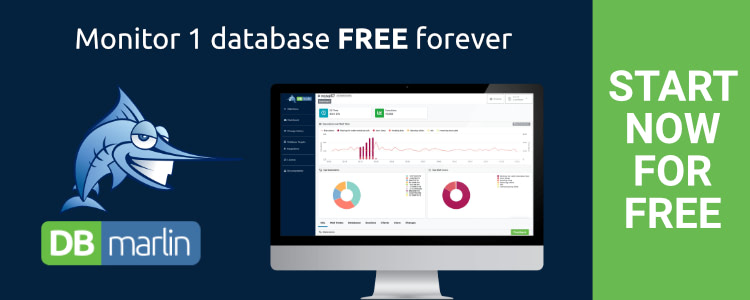Using DBmarlin to monitor MariaDB and SkySQL
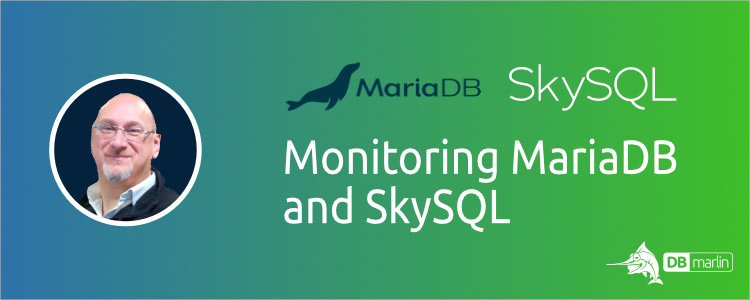
Over recent years there has been a move towards cloud and managed IT services. This has evolved from initial Platform as a Service (PaaS) offerings, to the hundreds of offerings from many providers available today. These cover just about everything you could want to deploy. There are benefits to having your services managed by a third party, the ones that come to mind first being the saving on capital expenditure and the ability to get your employees concentrating on the important job of making your customers happy. The downside to that, of course, is that you may not have people specifically deep-skilled in the technology that you are deploying.
Introducing SkySQL
Which brings me on to SkySQL, an interesting new SaaS (Software as a Service) or more specifically DBaaS (Database as a Service) offering based on the MariaDB platform. SkySQL is offering a $500 introductory offer at the moment so I thought it would be good to see how easy it is to spin up a service and connect DBmarlin to it, to do some in-depth monitoring.
Among the technical advantages to the SkySQL cloud database are the ability to choose where in the world you want to deploy your service and how resilient you want the service to be by choosing replicas and using multi-region deployments. SkySQL takes care of the backups on a daily basis and if a recovery is required, you can log a ticket through the SkySQL Support portal. Recovery is alway performed to a new instance, so you cannot overwrite your existing one although some application reconfiguration may be required to attach your application. Putting my old school DBA hat on again, it is good to see that patching and upgrades are included in the standard support level as this removes one of the major database management headaches.
Looking at the issue of in-house expertise, the DBA skills gap I mentioned above can be bridged with a monitoring tool like DBmarlin that can visualise performance over time and give you access to performance data that DBA’s around the world will be familiar with. SkySQL is a hosted version of MariaDB, which is itself a fork of MySQL, and as DBmarlin is already compatible with all MySQL variants, it can monitor SkySQL straight ‘out of the box’.
Getting started with SkySQL
The SkySQL portal makes deployment very easy, with the choice of running in either Google Cloud (GCP) or Amazon AWS and then selecting the type of workload you expect.
There have always been differing workload requirements from ‘The Business’ depending on the nature of the application. Some applications need high transaction rates such as customer facing OLTP systems, whilst others need the analysis and columnar storage features of data warehouses. With modern cloud platforms, you can choose a database engine best suited to your workload and more recently we are starting to see the emergence of hybrid options which are capable of transactional load whilst giving columnar capabilities at the same time. SkySQL has all bases covered here, with the choice of Transactional, Analytical, Hybrid (HTAP) and Distributed SQL services available.
Set up is as easy as you would expect and after selecting the CPU/Memory configuration you want and the size of the disk store, your database is up and running in a matter of minutes.
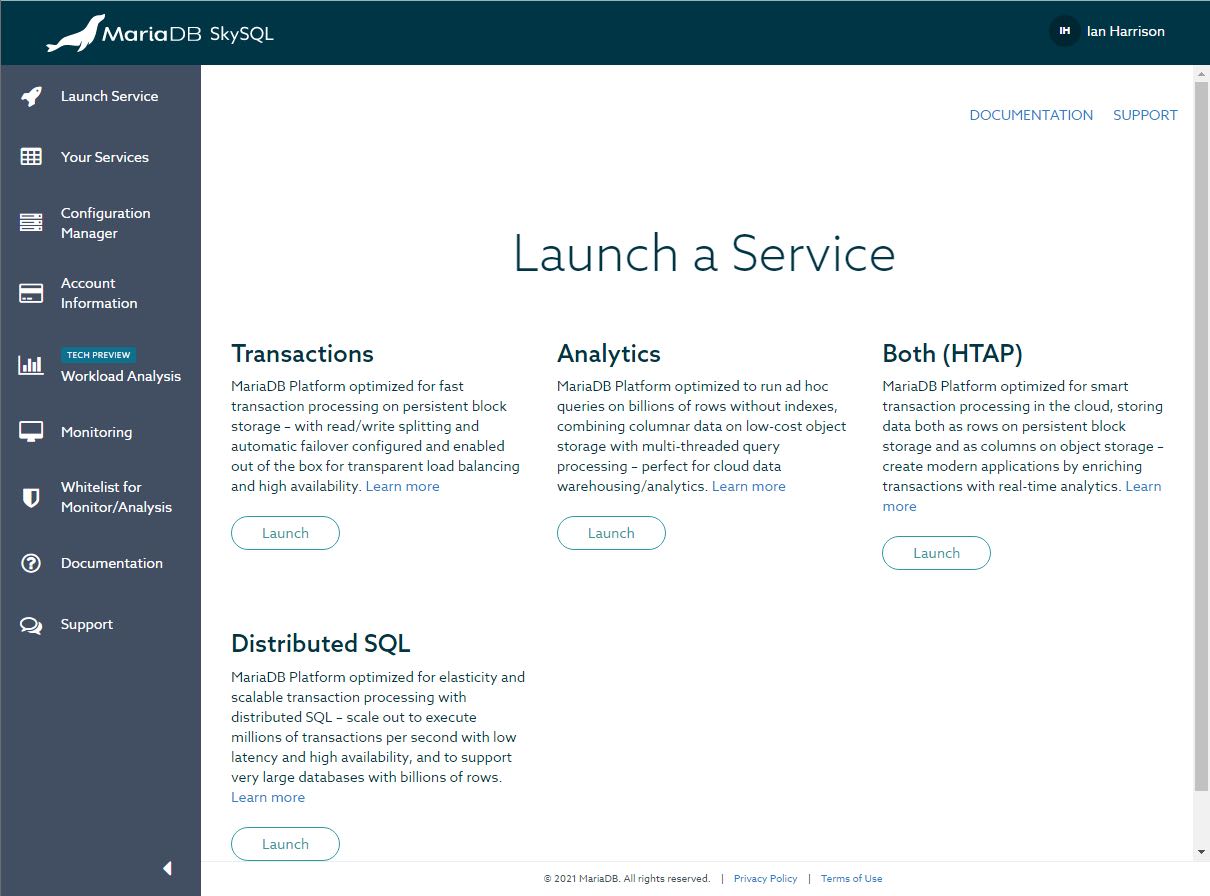
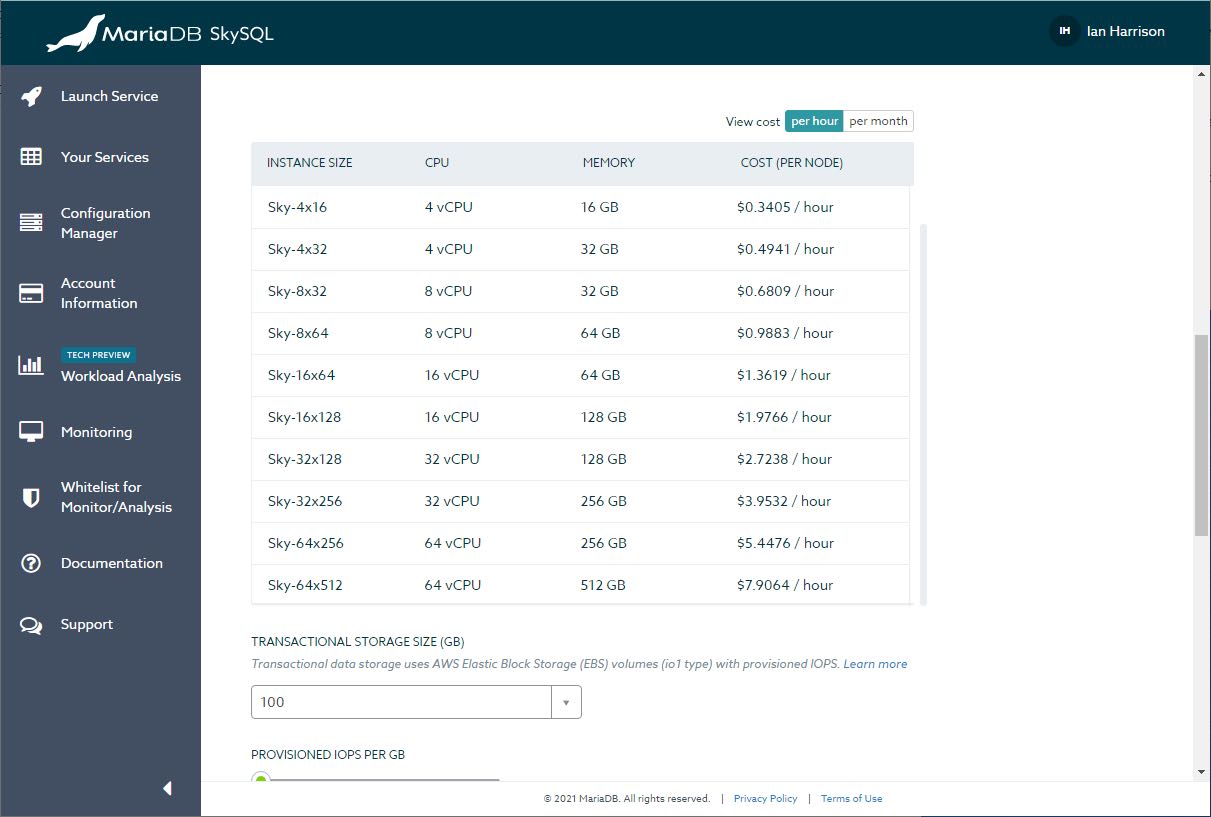
Monitoring SkySQL with DBmarlin
Once your instance is up and running, it’s time to add it to your favourite database performance monitoring tool. This is simple and just needs one extra step over and above a standalone MariaDB instance.
First add your DBmarlin monitoring host’s IP address to the SkySQL instance main network whitelist.
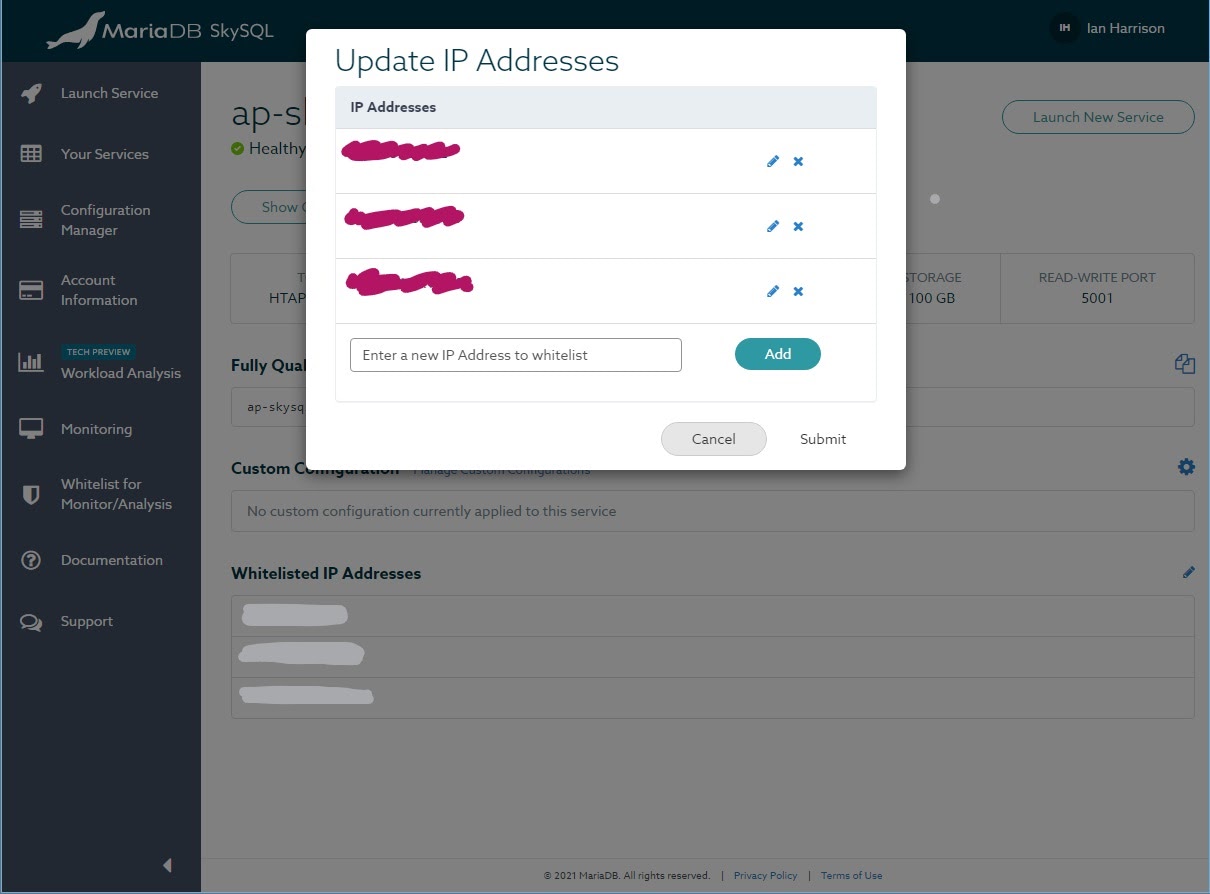
Then go ahead and use the information from the SkySQL ‘Show Credentials’ page to add a target in the DBmarlin Instance Creation page. You will need the fully qualified domain name, the port number, username and password.
Of course always change the password provided by SkySQL as part of the setup process and record the change somewhere safe!
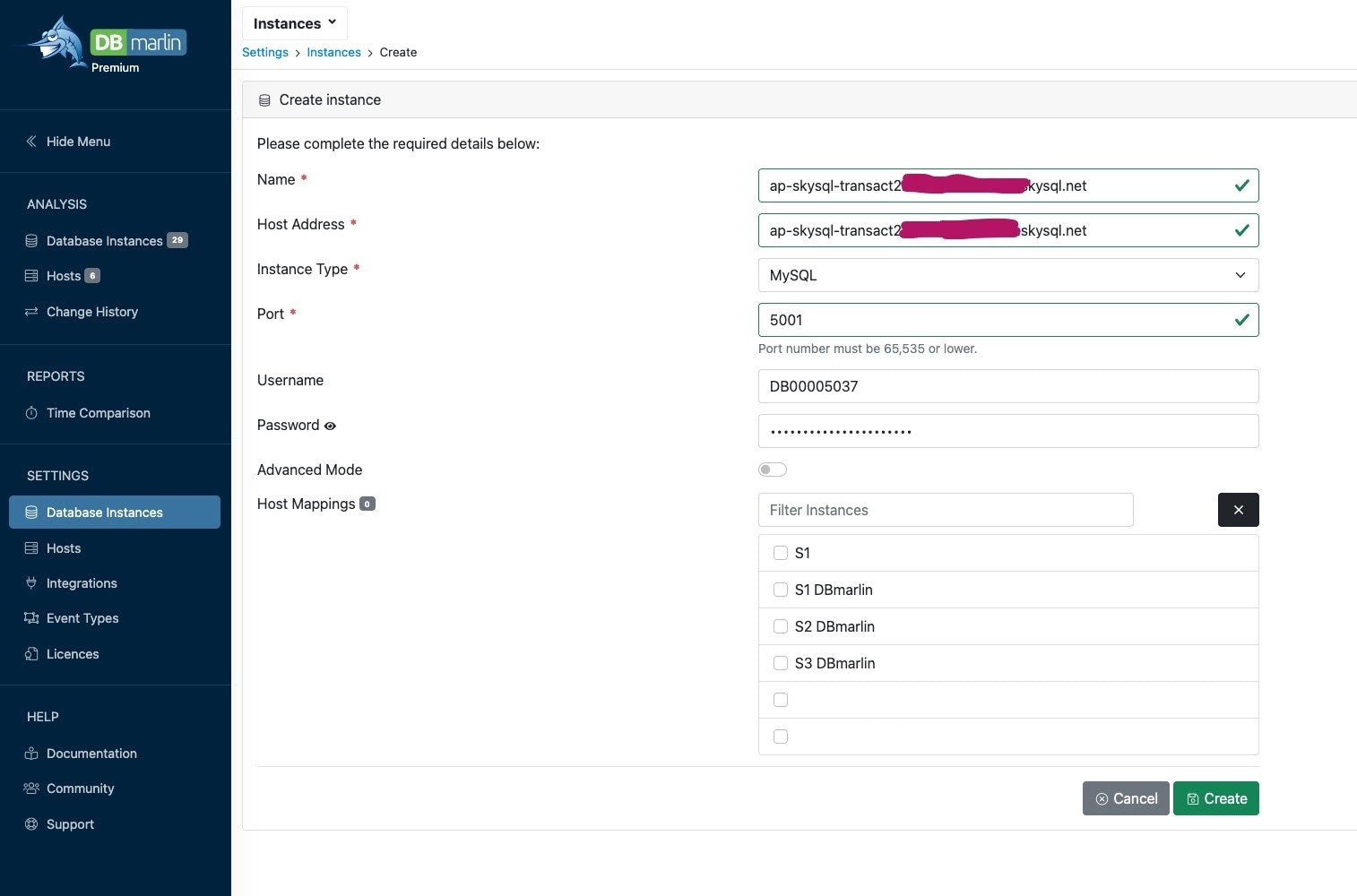
Now carry out the extra step required. Just go back into the DBmarlin sensor definition you just created, and under the advanced settings, update the JDBC string to ensure TLS 1.2 is used by adding ?enabledTLSProtocols=TLSv1.2. Here is an example:
jdbc:mysql://ap-skysql-htap-2.mdb0002311.db.skysql.net:5001/?enabledTLSProtocols=TLSv1.2
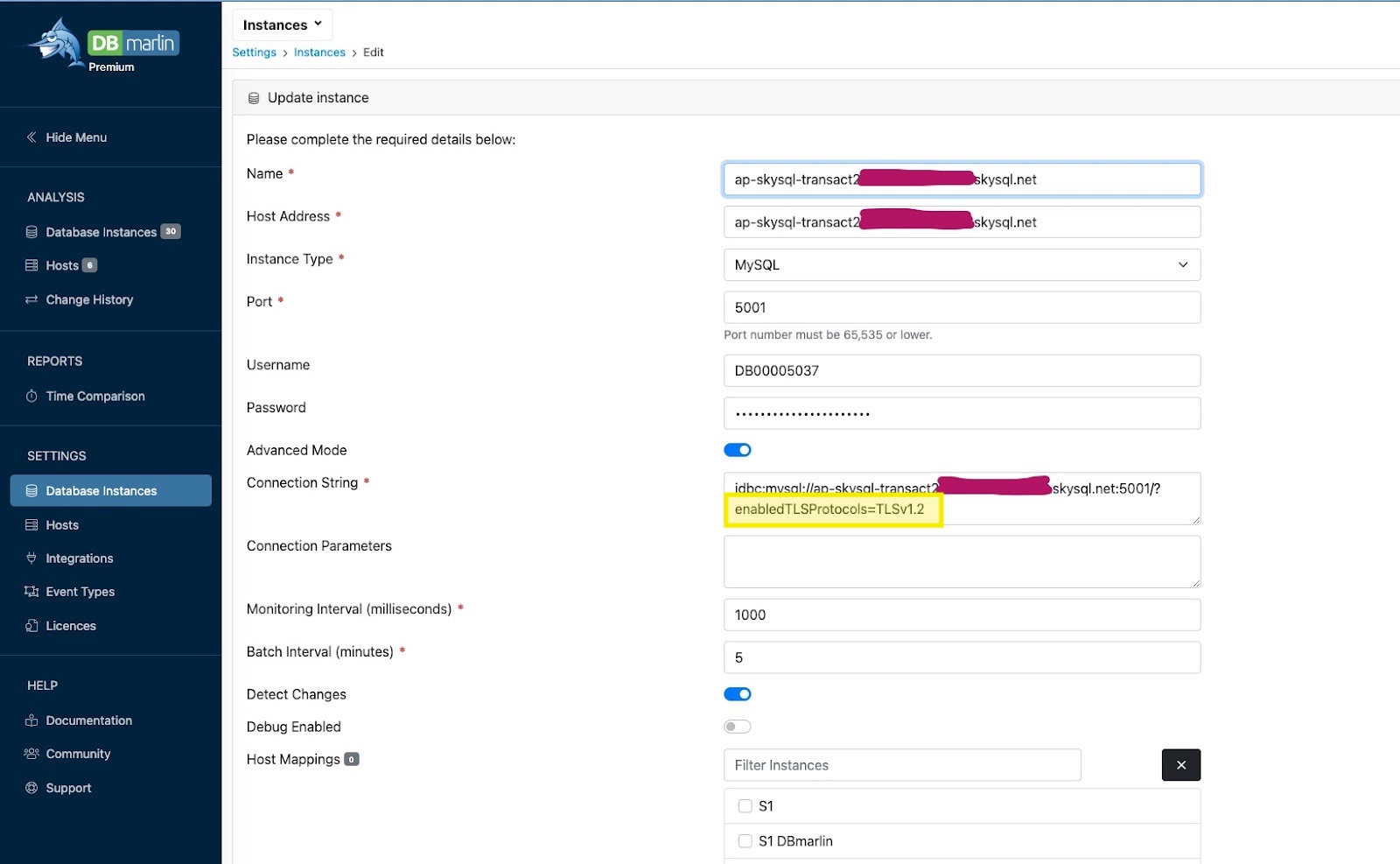
Once you have added the extra JDBC connection parameter, you should see the monitoring kick into life within a few seconds and you are away and you see the familiar trends and time breakdowns flowing into the console.
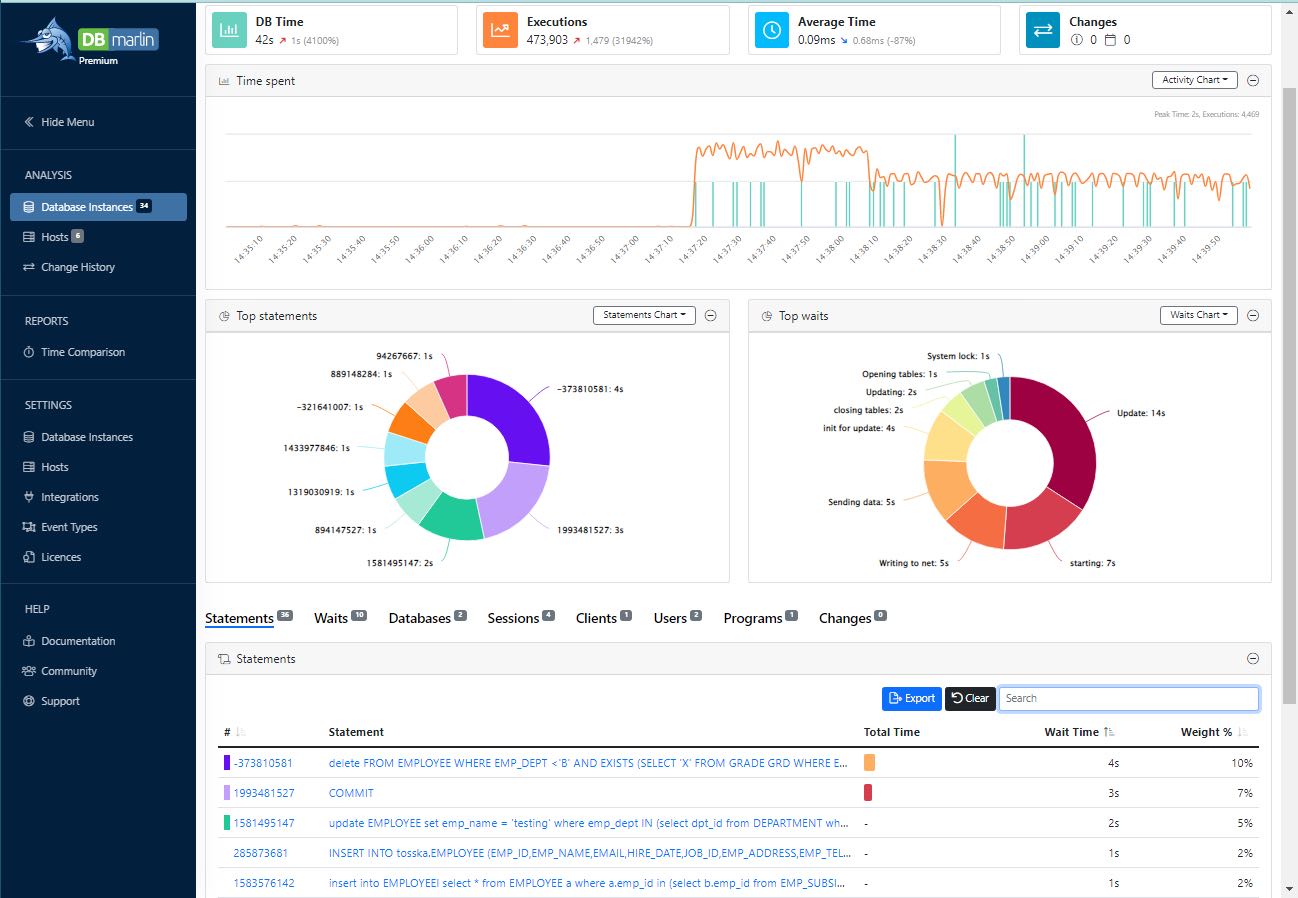
In summary
SkySQL gives a simple way into cloud MariaDB deployments. It has options which should cover all your needs, be it a simple transactional DB with replication or an 18 node distributed DB with MaxScale redundancy. The ease and speed with which you can spin up a cloud service database makes this a very attractive offering allowing your teams to focus on the applications that bring money into your business. At the same time as SkySQL is providing the database grunt at the backend, DBmarlin can give you the intuitive visual monitoring that you are already used to, allowing you to keep on top of performance trends and ensuring your customers remain happy.
Ready to try DBmarlin?
If you would like to find out more about DBmarlin and why we think it is special, try one of the links below.
- Get hands-on without an installation at play.dbmarlin.com
- Download DBmarlin from www.dbmarlin.com, with one FREE standard edition license, which is free forever for 1 target database.
- Follow the latest news on our LinkedIn Community at linkedin.com/showcase/dbmarlin
- Join our community on Slack at join-community.dbmarlin.com

